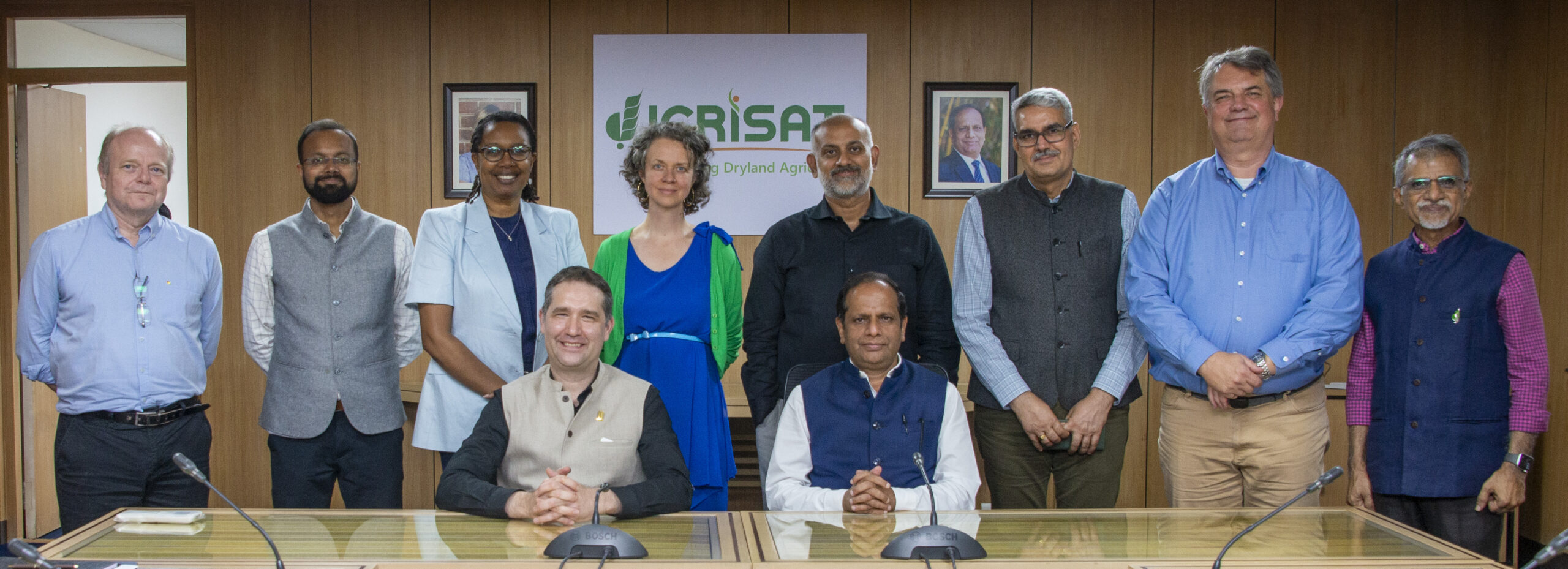ICRISAT and CIMMYT Leadership Reaffirm Commitment to Impactful Collaboration – CIMMYT

Strengthening Scientific Collaboration to Address Climate Change and Achieve Sustainable Development Goals
Introduction
The International Crops Research Institute for the Semi-Arid Tropics (ICRISAT) and the International Maize and Wheat Improvement Center (CIMMYT) have reaffirmed their commitment to a strengthened scientific alliance. This collaboration aims to transform food, land, and water systems in response to the growing challenges posed by climate change.
Joint Leadership Meeting
On a recent occasion at ICRISAT’s global headquarters in Patancheru, India, Dr. Himanshu Pathak, Director General of ICRISAT, and Dr. Bram Govaerts, Director General of CIMMYT, convened with senior leadership teams from both CGIAR centers. The meeting emphasized a shared vision to accelerate innovative research efforts based on decades of scientific excellence.
Focus on Climate Change and Smallholder Farmers
The leaders highlighted the urgency of addressing the escalating climate crisis and the necessity of delivering high-impact, scalable innovations that benefit smallholder farmers worldwide. This focus aligns with several Sustainable Development Goals (SDGs), including:
- SDG 2: Zero Hunger – by improving food security through resilient agricultural practices.
- SDG 13: Climate Action – by developing climate-resilient farming systems.
- SDG 1: No Poverty – by empowering smallholder farmers economically.
- SDG 15: Life on Land – by safeguarding natural resources and promoting sustainable land use.
Statements from Leadership
-
Dr. Himanshu Pathak, Director General of ICRISAT:
“This alignment between ICRISAT and CIMMYT reflects our shared responsibility to push the boundaries of agricultural science for greater impact. In harnessing our combined expertise, we can more effectively address the complex challenges facing farmers today. This will strengthen the recently launched ICRISAT Center of Excellence for South-South Collaboration in Agriculture (ISSCA).”
-
Dr. Bram Govaerts, Director General of CIMMYT:
“Collaboration is not just a strategic choice—it is a necessity in the face of climate change, inequality, and shifting global food demands. By strengthening ties with ICRISAT, we are accelerating the delivery of science-driven, locally grounded solutions that empower smallholder farmers and build more resilient food systems for everyone.”
Commitment to CGIAR Global Goals
As members of CGIAR, the world’s largest agricultural research partnership, ICRISAT and CIMMYT reiterated their dedication to contributing to CGIAR’s global goals, which align closely with the SDGs:
- Ending Hunger (SDG 2)
- Reducing Poverty (SDG 1)
- Safeguarding Natural Resources (SDG 15)
These efforts are pursued through a climate-resilient lens to ensure sustainable and equitable development for smallholder farmers and communities worldwide.
1. Sustainable Development Goals (SDGs) Addressed or Connected
- SDG 2: Zero Hunger – The article emphasizes efforts to end hunger by supporting smallholder farmers and transforming food systems.
- SDG 13: Climate Action – Addressing the growing challenges of climate change and delivering climate-resilient innovations is a central theme.
- SDG 1: No Poverty – The article mentions reducing poverty through scientific innovations benefiting smallholder farmers.
- SDG 15: Life on Land – Safeguarding natural resources and transforming land systems are highlighted.
- SDG 6: Clean Water and Sanitation – The transformation of water systems is mentioned, linking to sustainable water management.
2. Specific Targets Under Those SDGs Identified
- SDG 2 Targets:
- Target 2.3: By 2030, double the agricultural productivity and incomes of small-scale food producers.
- Target 2.4: Ensure sustainable food production systems and implement resilient agricultural practices.
- SDG 13 Targets:
- Target 13.1: Strengthen resilience and adaptive capacity to climate-related hazards and natural disasters.
- Target 13.2: Integrate climate change measures into national policies, strategies, and planning.
- SDG 1 Targets:
- Target 1.2: Reduce at least by half the proportion of people living in poverty.
- SDG 15 Targets:
- Target 15.1: Ensure the conservation, restoration, and sustainable use of terrestrial and inland freshwater ecosystems.
- SDG 6 Targets:
- Target 6.4: Increase water-use efficiency across all sectors and ensure sustainable withdrawals.
3. Indicators Mentioned or Implied to Measure Progress
- Indicators related to SDG 2:
- Proportion of small-scale food producers with secure and equal access to land, technology, and markets.
- Yield per hectare of staple crops.
- Indicators related to SDG 13:
- Number of countries with national and local disaster risk reduction strategies.
- Extent of climate-resilient agricultural practices adopted.
- Indicators related to SDG 1:
- Proportion of population living below the international poverty line.
- Indicators related to SDG 15:
- Proportion of land area covered by forests and other natural ecosystems.
- Measures of land degradation and restoration.
- Indicators related to SDG 6:
- Water use efficiency in agriculture.
- Proportion of water bodies with good water quality.
4. Table of SDGs, Targets, and Indicators
| SDGs | Targets | Indicators |
|---|---|---|
| SDG 2: Zero Hunger |
|
|
| SDG 13: Climate Action |
|
|
| SDG 1: No Poverty |
|
|
| SDG 15: Life on Land |
|
|
| SDG 6: Clean Water and Sanitation |
|
|
Source: cimmyt.org








